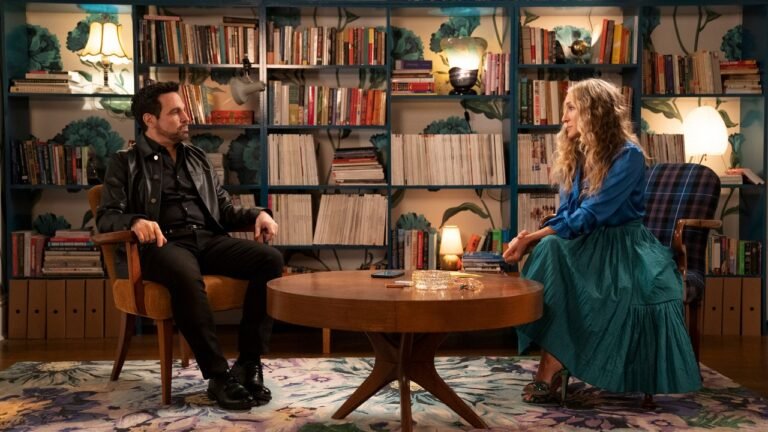Inside a Celebrity Stylist’s Country Retreat in Westchester, New York
When Leslie Fremar walked into her 18th-century Katonah, New York, farmhouse for the first time, “I just knew that it was meant to be mine,” she says. Fremar is a powerhouse fashion stylist who counts Charlize Theron, Julianne Moore, Jennifer Connelly, Nicola Peltz, and more A-listers among her clients. Fittingly, this home was in desperate need of a makeover. “It was kind of a disaster, but I fell in love with it. It just had good vibes.”
After asking Moore—a design aficionado whose own self-decorated New York City town house graced the November 2017 cover of AD—to help her determine the direction for her Tribeca loft, Fremar decided to go at it (sort of) alone with the decoration of what would become a weekend getaway for herself, her partner, and their two sons. But first, the house—a labyrinth of small, low-ceilinged, and Colonial-style rooms with a post-and-beam addition—was in need of some major renovation. For this, Fremar brought in architectural designer Oliver Freundlich, who also worked with Moore on her town house, and just so happens to be her brother-in-law.
The 20th-century addition encompasses an A-frame living room with a stone fireplace and a wall of windows, a kitchen, and a dining area. This section of the house has higher ceilings, which brings in some much-needed natural light, and although the use of reclaimed wood beams makes it stylistically cohesive with the original dwelling, it wasn’t connected as seamlessly as it could have been. Over almost eight months, Fremar and Freundlich revamped the kitchen and bathrooms and built brand new staircases leading from the main living space up to the third-floor primary suite and down to the ground floor family room. The reconfiguration made the layout of the home “more gracious” and “a little bit more rational,” Freundlich explains.
Buy now for unlimited access and all of the benefits that only members get to experience.
“The primary challenge is to honor and understand the original proportions and scale of the historic house. It doesn’t mean you can’t modify things. It doesn’t mean you can’t enlarge a doorway, which we did, so that you could actually pass under it,” Freundlich says. “I think the way to be appropriately modern and bring in a fresh attitude is how you deploy materials.”
Handmade Moroccan tiles, unlacquered brass, and an eclectic collection of art and furniture help bridge the gap between the 1700s and today. “I was trying to put a modern spin on it,” Fremar says, but most of the original floors and some original beams remain intact. “It really feels like a trip around the world, and different time periods. I wanted to use primitive pieces just to honor the age of the home. Then I have learned to appreciate midcentury pieces.”
Aside from Freundlich, Fremar enlisted a “friend with impeccable taste,” Shoshanna Sugahara, art consultant (and Rockaway Hotel partner) Michi Jigarjian, and landscape designer Marge Sandwick to put the finishing touches on the place. Throughout the process, Fremar learned that the satisfaction that comes from decorating a home arrives much more slowly than that of red-carpet styling. “You’re really building a story that takes time, which, at first, was hard for me because I’m obviously used to that instant gratification,” she says. But after eight years of owning this home, and a period of time during the pandemic where it became her and her family’s primary residence, “I think it’s starting to feel more like me, which is an accomplishment.”




